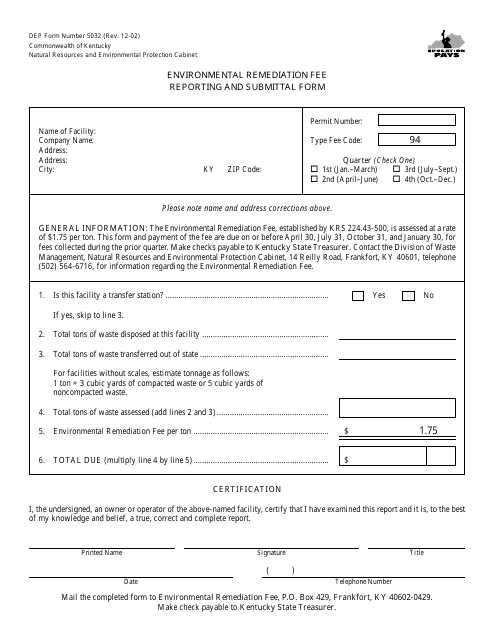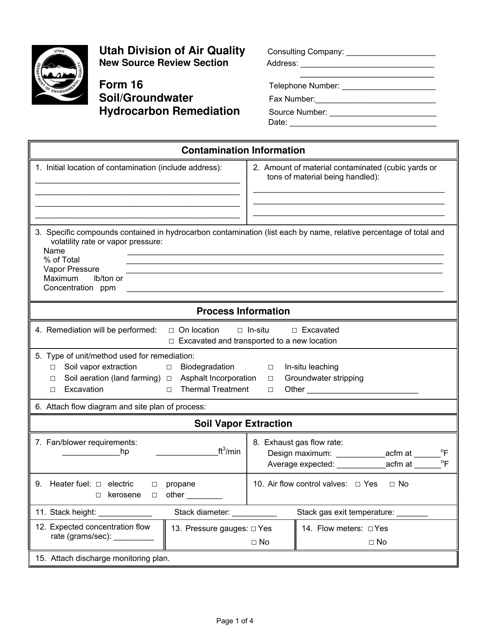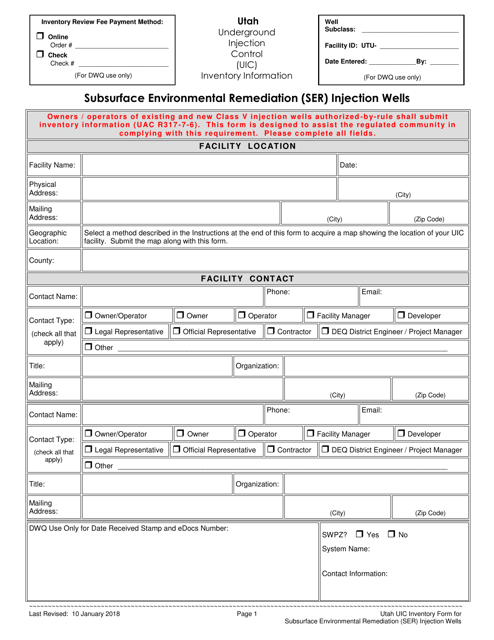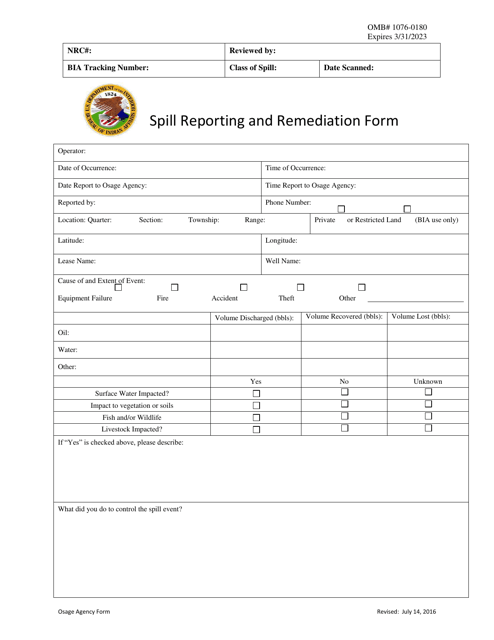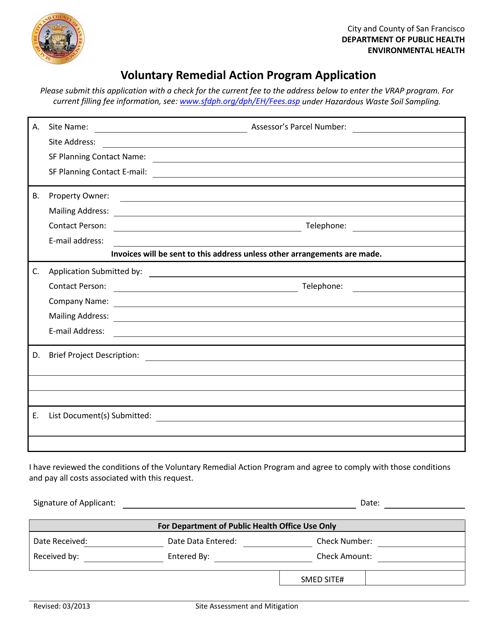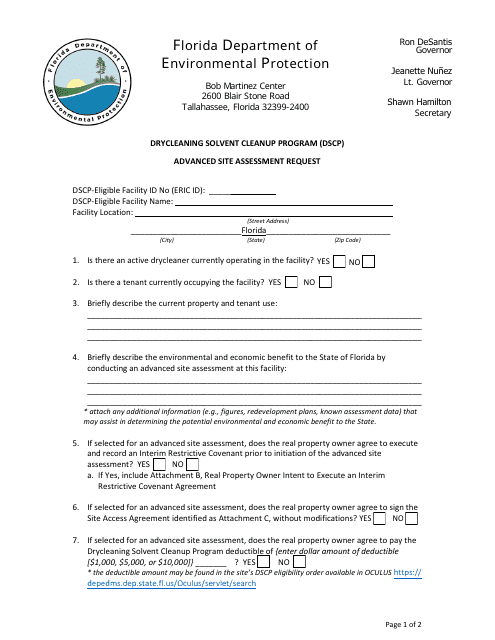Environmental Remediation Templates
Environmental remediation, also known as environmental clean-up or site remediation, refers to the process of addressing and resolving contamination issues in the environment. This comprehensive and essential branch of environmental management focuses on identifying, assessing, and mitigating the impact of pollutants or hazardous materials on land, water, and air.
In order to facilitate and regulate the environmental remediation process, various documents and forms have been established by governments and regulatory bodies. These documents provide guidance, reporting mechanisms, and legal frameworks to ensure that the clean-up initiatives are conducted effectively and efficiently.
One such document is the Form DEP5032 Environmental Remediation Fee Reporting and Submittal Form from Kentucky. This form helps businesses and organizations report and submit fees for their environmental clean-up activities. Similarly, the Form IT-613 Claim for Environmental Remediation Insurance Credit for Qualified Sites Accepted Into the Brownfield Cleanup Program Prior to July 1, 2015, in New York allows eligible entities to claim insurance credits for their environmental remediation efforts.
Another important document is the Environmental Assessment, as required in Montana. This assessment is a systematic evaluation of the potential environmental impacts of a proposed project, and it helps regulators make informed decisions concerning the remediation process.
In New York, the Form CT-613 Claim for Environmental Remediation Insurance Credit is instrumental in allowing businesses and individuals to claim insurance credits for their environmental cleanup activities.
The Advanced Site Assessment Request from the Drycleaning Solvent Cleanup Program (DSCP) in Florida is an additional example of a document that supports the environmental remediation process. It allows stakeholders to request an advanced site assessment to assess the extent of solvent contamination and plan for remediation accordingly.
Overall, environmental remediation documents play a crucial role in facilitating the clean-up efforts to ensure the protection of the environment and human health. These documents aid in compliance, reporting, financial support, and assessment of contaminated sites. Whether it is through fee reporting forms, insurance credit claims, or advanced site assessments, these documents support the ongoing efforts to restore and maintain a safe and healthy environment for communities and future generations.
Documents:
23
This form is used for reporting remediation activities in the state of Alabama according to ADEM regulations.
This form is used for reporting and submitting environmental remediation fees in the state of Kentucky. It is required for individuals or businesses engaged in remediation activities to calculate and pay the appropriate fees based on their activities.
This form is used for applying for funding to remediate Brownfield sites in the state of Virginia.
This document is an application form used in Tennessee for mobile thermal treatment of petroleum contaminated soil.
This Form is used for reporting and documenting the remediation of soil and groundwater contaminated with hydrocarbons in the state of Utah.
This document is about the use of Subsurface Environmental Remediation (SER) injection wells in Utah. It provides information on how these injection wells are used for environmental remediation purposes.
This form is used for requesting an opinion regarding the Voluntary Cleanup Program in Washington state.
This document is used for conducting an environmental assessment in the state of Montana. It evaluates the potential environmental impacts of a proposed project or development and suggests mitigation measures to minimize harm to the environment.
This document is used for reporting and addressing spills or contamination incidents. It helps in documenting the details of the spill and the steps taken for remediation.
This form is used for the disposition of purchased remediation equipment in Montana.
This document provides audit checklists for the Nevada Brownfields Program in Nevada. The checklists help ensure compliance and proper assessment of brownfield sites.
This document is for applying to the Voluntary Remedial Action Program in the City and County of San Francisco, California.
This type of document, known as a No Further Action Report or Conditional No Further Action Report, is used in Arizona's Voluntary Remediation Program. It is a report that signifies that no further action is required for a specific remediation project or site.


